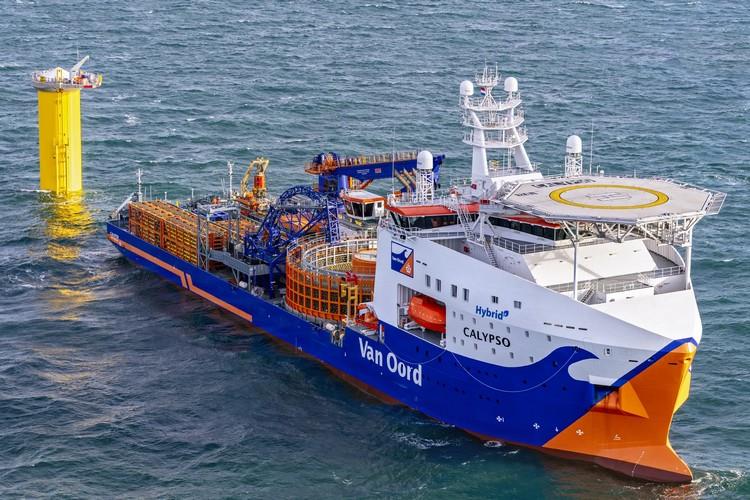
Van Oord has successfully completed the laying, burial, termination and testing of 109 array cables at the Sofia Offshore Wind Farm. This achievement underscores Van Oord’s commitment to accelerating the global energy transition through large-scale renewable energy infrastructure.
The Sofia project marked the first operational deployment of cable-laying vessel Calypso. Purpose-built to install cables for offshore wind projects worldwide, Calypso features the latest sustainable technologies and delivered a strong performance throughout its debut. Upon completion of its activities on Sofia, Calypso has immediately commenced for its next assignment. Following the cable-laying operations, the state-of-the-art Dig-It trencher, deployed from the Subsea Viking, ensured precise and efficient burial of more than 360 kms of cables. The ultimate cable termination and testing works were executed from several walk-to-work vessels by our experienced tower teams.

‘Completing the installation of all 109 cables is a major achievement for the Sofia project team. It reflects dedication, expertise, and close collaboration between all parties involved. I am also proud of the outstanding performance and I would like to thank all the crew and the project teams onboard the Calypso, Subsea Viking and Dig-it, and the various walk-to-work and chartered vessels for all their hard work, perseverance, and support for achieving this milestone', said Roeland Ris, Project Director at Van Oord.
About the Sofia Offshore Wind Farm
The Sofia Offshore Wind Farm is located on Dogger Bank in the central North Sea, 195 kms from the North East coast of the UK. With a capacity of 1.4 GW, it will supply power to 1.2 million UK households. Van Oord was contracted for the engineering, procurement, construction and installation (EPCI) scope for the foundations and array cables. The wind farm is expected to be fully operational in 2026.
Source: Van Oord











